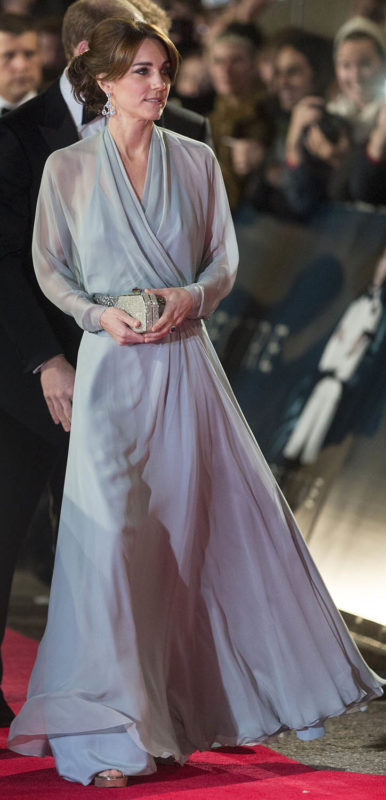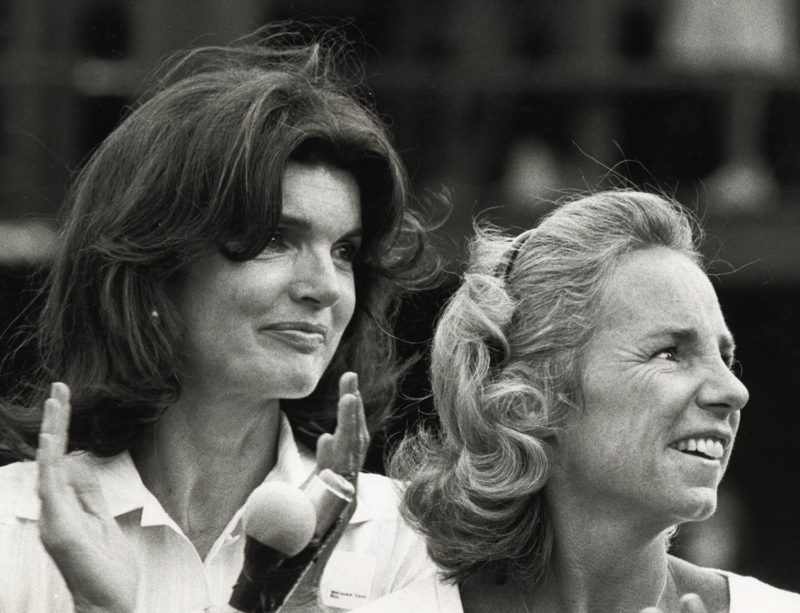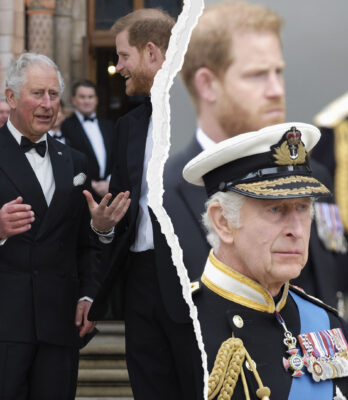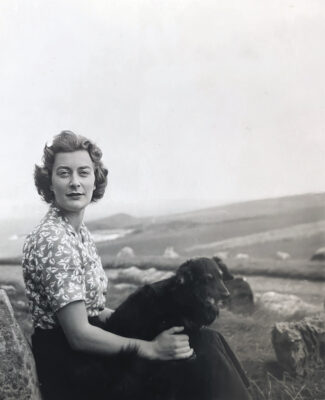
Family Matters
When Push Comes to Shove
Who says a little sister-in-law rivalry can’t be productive? The Vanderbilt and Kennedy women clearly benefited. The Windsor SILs appear to be, too.
On the night of July 18, something quite historic happened in the annals of posh celebrity sisters-in-law competition. At an all-the-rage restaurant in lower Manhattan, Meghan Markle, the Duchess of Sussex, wore a stunning jumpsuit—with a white trim at the top and long, black silk pants—that was nearly identical to a dress that Kate Middleton, the Duchess of Cambridge, had worn just two months earlier to the Top Gun: Maverick premiere in London.
In the side-by-side photographs posted on the Internet the next day, Meghan seemed to be copying Kate. Spurred by envy? The desire to honor? Doesn’t matter. Kate had looked sensational and killingly chic. Had she ever looked better? It seemed not.
Perhaps having Meghan come streaming into the royal family prodded Kate to up her game. Before Meghan, it was Kate, the daughter of party-planning business owners, who’d been the lovely commoner breathing modern air into the antiquated monarchy, albeit in a genteel, wholesome way. Then, in May 2018, Meghan officially joined the Firm. As we all know, there’s been some family drama since.
But if we can tease out one small positive thing to come of these last four years—and, in an optics-driven media world it’s not small—it’s Kate’s new, confident, and sophisticated glamour, a quality she had never quite evinced when she was the sole sister-in-law linking the heir and the spare.
Now, the Duchess of Cambridge exudes star power wherever she shows up. And her mega-watt smile seems to be saying: I’m winning. Could this transformation have happened without Meghan? It’s hard to know without a crystal ball, but easy to assume: Nope.


Competition is usually frowned upon in families. Google the subject and you’ll find quite a number of admonishing links. “How to Stop Competing with Your Sister-in-Law,” for one, direly warns that, “competition between sisters-in-law can be common in some families, which can drive a wedge between not only the women, but the entire family.”
Indeed, many famous sisters-in-law seem to go out of their way to lavish praise on each other nowadays. Cameron Diaz reacting to a fan’s realization that she and Nicole Richie are sisters-in-law? Twin emojis (they’re both wed to twin musician brothers, Joel and Benji Madden). Sophie Turner on her SIL, Priyanka Chopra (each married to a Jonas brother): “She’s the biggest thing in India right now. They worship her over there.” Priyanka in turn posted: “Good luck [Sophie] you are a boss babe. And are very loved” on Instagram on the eve of the final Game of Thrones season premiere, even photoshopping her dog into the pic of Sansa on the Iron Throne.
All very nice, but historically, when the claws were a tiny bit out, society at large benefited. Case in point: Alva and Alice Vanderbilt, the two doyennes of Newport, Rhode Island society. In the fin de siècle, the two A’s were intent on one-upping each other’s mansions. The elder Alice and her husband Cornelius were constructing The Breakers, while the younger Alva and her mate William (the two men were brothers) were finishing their home, the close-by Marble House.
The two colossal edifices were the brick-and-marble realizations of the Vanderbilt SIL’s rivalry. But it was a productive rivalry. In outdoing one another as heads of the Newport social world, both women contributed enormously to the public good: Alice endowed hospitals and buildings; Alva endowed society, becoming an early, ardent feminist.
Alva would go on to join the National American Women’s Suffrage Association (NAWSA) and become a delegate to their convention in London. She paid for NAWSA’s Fifth Avenue offices, formed her own organization (the Political Equality League), and led a Women’s Votes Parade in Manhattan. In response, Alice (who was Gloria Vanderbilt’s grandmother), upped her financial generosity, giving heavily to the Salvation Army, the Red Cross, hospitals, churches, and Yale University.
So while the Vanderbilt sisters-in-law may have dueled emotionally over their grand houses, that competition led to other competitions—the political vs. the charitable—that did America good.
While Alice and Alva competed in ways that helped the public good, two other sisters-in-law, Jackie and Ethel Kennedy, would later compete for public respect, adulation—and the title of the matriarch of America’s first family.
In 1960, Jackie was the elegant, French-fluent, whisper-voiced First Lady with whom America (and much of the world) fell madly in love after the dutiful dowdiness of Mamie Eisenhower. The September 1, 1961 issue of Life Magazine showed Mrs. John F. Kennedy leaning against a White House balcony railing in a smart white Courrèges suit, poised to, as the inside headline said, “bring history and beauty back to the White House.”
Jackie called her sister-in-law Ethel Skakel Kennedy—the athletic, devoutly religious, and robust member of a boisterous family—a “baby-making machine” because of her birthing of eleven children to JFK’s younger brother, Bobby. Ethel, meanwhile, dismissed Jackie as “the Debutante.”

Next to sophisticated Jackie, Ethel perhaps seemed representative of a less-evolved America. But it was Bobby and Ethel’s America that would ultimately represent the country’s future.
If John Kennedy’s assassination was the end of Camelot—a lovely but superficial theatrical image—then the assassination of Bobby Kennedy as he was running for President in 1968 signified a much more important loss. Bobby was an antipoverty and antiwar crusader, a voice for minorities—America’s first “rock star” candidate. After his assassination, a poll named Ethel the “most-admired woman in America.”
Both Kennedy widows proved to be resilient, admirable, and iconic in their own ways, however, three traits one could handily now apply to Kate.

In this optics- and brand-conscious moment, with glamorous young royalty on parade in many countries (see: Queen Jetsun Pem of Bhutan, with whom Kate has been photographed; Princess Maria-Olympia of Greece; Princess Sirivannavai Nariratana of Thailand; and Princess Alexandra of Luxembourg, among others), looking chic is essential. Kate no longer appears semi-frumpy and uncertain in comparison. Instead, she looks sartorially magnificent—and ready to be a queen
And as with the Vanderbilt sisters-in-law’s rival houses, Kate and Meghan’s competition has deeper social ramifications than a sartorial toe-to-toe.
In recent years, Kate has taken on many more public-facing responsibilities for the Firm. She upped her load in 2021, carrying out 65 engagements over 63 days, while managing three young children. In the first half of 2022, she’s already undertaken a major royal overseas tour, front-row appearances at the Queen’s Platinum Jubilee, and a host of high-profile charity, sport, and red-carpet events besides. And in February, Kate was named the new patron of the Rugby Football League and the Rugby Football Union, replacing her brother-in-law, Prince Harry.
It’s hard not to imagine that Kate’s additional public duties and patronages, some of which are themselves due to her SIL and BIL’s recent exit from the royal family, may have come as a result of her increased glamour—if you look good, you’re sent out into the world more.
So should you find yourself seated next to bickering sisters-in-law at your Thanksgiving table this year, just ignore them, and pass the turkey. Who knows what good might come of the two of them yet.



